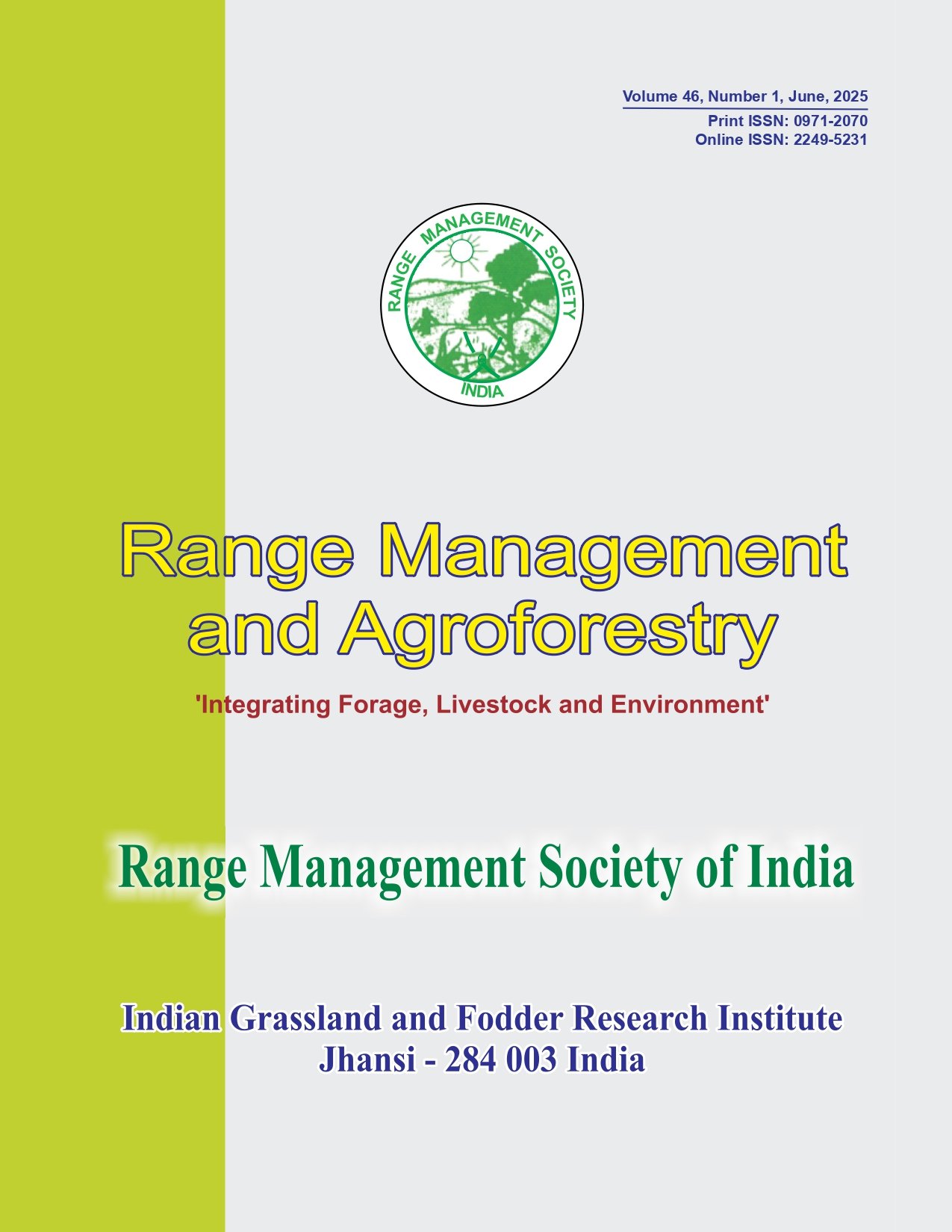Integrated weed control measures for higher yield of Egyptian clover (Trifolium alexandrinum L.)
Abstract
Weed management is impeccable for achieving the self-sufficiency in the availability of quality forage. Effective and environmentally sound weed management options are required at this time. Hence, a study was initiated with an objective to study the effect of post emergence (POE) application of propaquizafop and the combination of stale seedbed technique (SST) fb propaquizafop POE (0.075 kg a.i. ha ) on the weed control -1and yield of berseem. The results showed that the combination of SST fb propaquizafop POE was superior on berseem plant m , grass weed (GW) density and biomass, broadleaf weeds (BL) density and green fodder-2 yield (GFY). However, SST fb propaquizafop POE and propaquizafop POE alone was comparable with the grass weed density and biomass throughout the study. Furthermore, it indicates that POE application of propaquizafop is not an effective option for BL control in berseem. Furthermore, the weed problem is a threat throughout the growth period of the crop. Therefore, applying herbicides (propaquizafop POE at 0.075 kg a.i. ha ) for grassy weed control or manual weeding at 10 days after each cut, could be a worthwhile option for -1 broad-spectrum weed control and higher yield in berseem.




